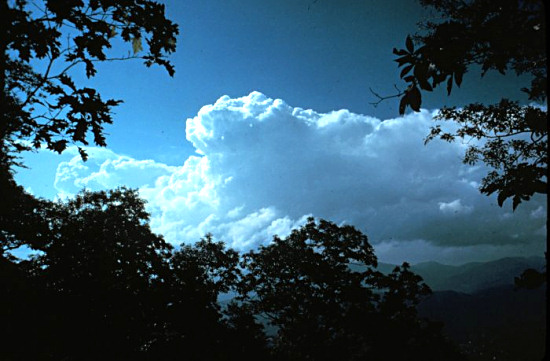

We live at the bottom of a sea, a sea of gas. Part of this gaseous ocean is water in the form of gas, what we usually refer to as water vapor. Our rare desert rains inform us that not all the water stays in the form of gas. Indeed, much of our weather is shaped by atmospheric water moving back and forth between gas, liquid water, and solid ice.
We're all aware that water, as it evaporates, soaks up heat, this
being the feature that allows our swamp coolers to cool. A little thought might lead
you to the conclusion that the opposite—condensation—releases heat, and
you'd be right. You probably also know that cool air cannot hold as much moisture
as warm air. Add all of this together and add in the fact that our desert is pretty
much surrounded by mountains, and you now know a lot about why we're a desert. Air
forced upwards by mountains cools and rain condenses out. The result? Air that is both
dry and warm, perfect for making deserts.

Listen to the Audio (mp3 format) as recorded by KTEP, Public Radio for the Southwest.
Contributor: Arthur H. Harris, Laboratory for Environmental Biology, Centennial Museum, University of Texas at El Paso.
Desert Diary is a joint production of the Centennial Museum and KTEP National Public Radio at the University of Texas at El Paso.

Cumulonimbus clouds. Photograph by Grant W. Goodge, courtesy of National Oceanic and Atmospheric Administration/Department of Commerce.